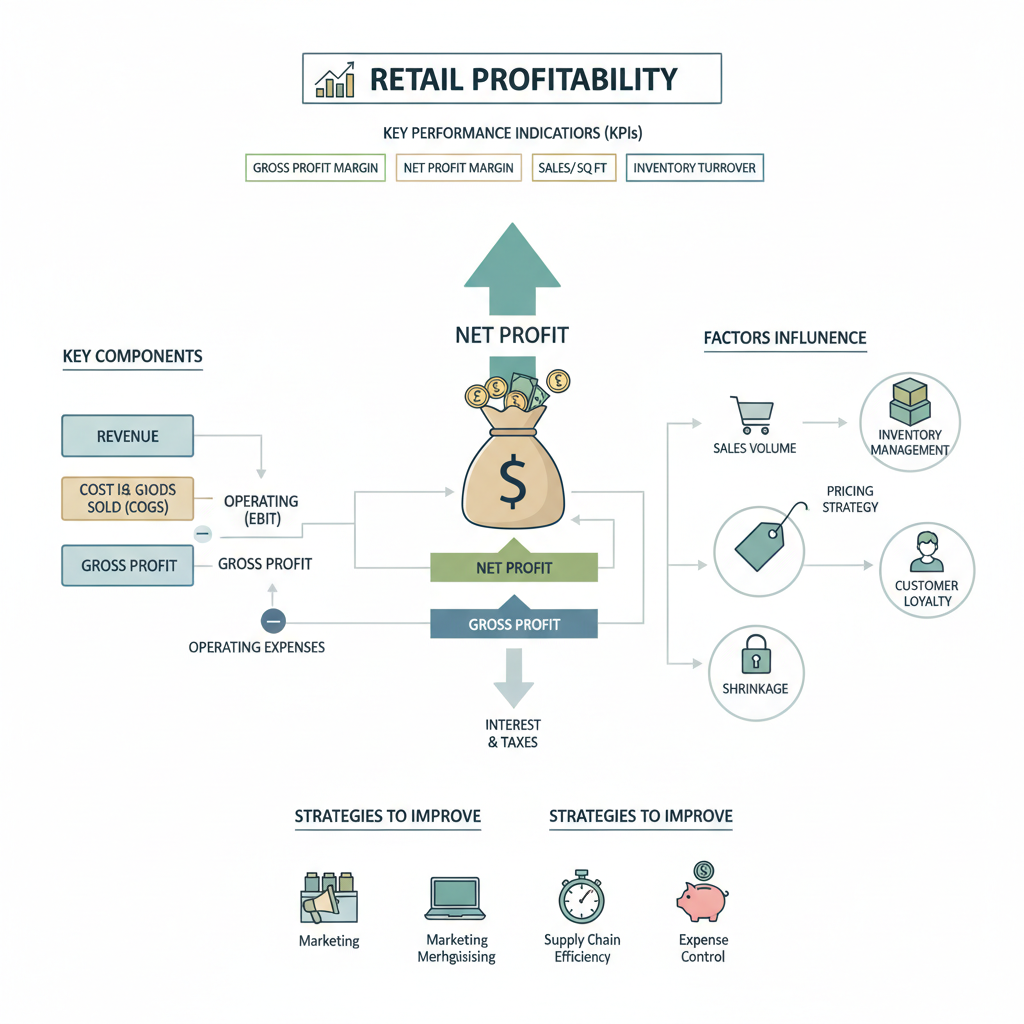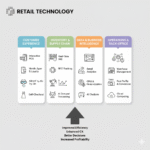In the sprawling, fast-paced world of retail, one simple action has quietly become one ofthe industry’s most significant challenges: the customer return. The seamless “click to buy” experience of e-commerce has created a “click to return” expectation, and the financial shockwaves are being felt by retailers of all sizes. In 2023 alone, retail returns accounted for over $743 billion in lost sales in the United States.
This tidal wave of returned goods has given rise to a critical new field: return economics. This isn’t just about managing costs anymore. It’s about a complete strategic shift in handling the reverse flow of goods, a process known as reverse logistics. What was once an overlooked operational headache, hidden in the back of a warehouse, is now a frontline battleground for profitability, customer loyalty, and sustainability. Retailers who master return economics are not just surviving; they are finding new, unexpected ways to thrive.
The Tsunami of Returns: Why “Return Economics” Is the New Retail Battleground
For decades, returns were a predictable, manageable part of doing business. But the digital transformation of retail, accelerated by the e-commerce boom, has fundamentally broken the old models.
From “Buy Now” to “Send Back”: The E-commerce Effect
In a traditional brick-and-mortar store, a customer interacts with a product. They can touch the fabric, try on the shoes, or see the item’s true size and color. This tactile experience creates a high level of purchase confidence.
E-commerce shatters this. The customer’s living room has become the new fitting room. Shoppers “bracket” their purchases, buying multiple sizes, colors, or styles with the full intention of returning most of them. This behavior is not a bug; it’s a feature of modern online shopping. As a result, e-commerce return rates can hover between 20-30%, more than double or even triple the 8-10% average for physical stores.
The Customer Expectation Dilemma: Free, Fast, and Flawless Returns
This new shopping behavior is fueled by a powerful customer expectation: returns must be free, fast, and easy. A difficult or costly return process is no longer a minor inconvenience; it’s a deal-breaker. Studies show that over 80% of shoppers will not shop with a brand again after a negative return experience.
Retailers are caught in a vise. They must offer a seamless returns policy to acquire and retain customers, but each return directly attacks their profit margins. This is the central challenge of modern return economics.
The Old Playbook: Reverse Logistics as a “Cost Center”
Historically, “reverse logistics” was a term whispered in the darkest corners of the supply chain. It was seen as a pure cost center—a financial black hole where profits went to die.
The old playbook was simple and destructive. A returned item would begin a costly journey:
- Shipping: The retailer often paid for the return shipping label.
- Labor: An employee had to receive the package, open it, and inspect the item.
- Processing: The item’s condition was assessed. Was it sellable? Did it need repacking?
- Disposition: In most cases, the process was too slow and inefficient. The item, now out of season or devalued, was marked for liquidation.
Leaking Profits: From Warehouse Chaos to Liquidation Losses
This “cost-plus” model meant that for every dollar of product returned, retailers would spend significant cents just to process it. The easiest (and most wasteful) solution was to sell pallets of returned goods to third-party liquidators for pennies on the dollar. Billions of dollars in potential value were simply written off as a cost of doing business, with a staggering amount of product ending up in landfills.
The New Playbook: Flipping the Script from Cost to Profit Center
The revolutionary idea at the heart of modern return economics is this: a return is not an end, but a new beginning. Visionary retailers are transforming their reverse logistics from a cost center into a powerful “profit center,” and they are doing it by unlocking the hidden value in their returned goods.
Data Is the New Gold: Using Return Analytics to Your Advantage
The most profitable return is the one that never happens. The first step in the new playbook is to use return data as a powerful feedback loop.
- Why are items being returned? Don’t just track “customer dissatisfaction.” Get granular.
- “Item Not as Described”: If a specific shirt is constantly returned for this reason, the problem isn’t the customer; it’s the product photos or description. Fix the product page, not the return.
- “Wrong Size”: If a particular shoe model is always returned for being “too small,” your sizing chart is wrong, or the manufacturer has a consistency issue. This data allows you to fix the root cause, slashing future return rates and boosting customer satisfaction.
The Rise of Recommerce: Tapping into the Secondary Market
What about the items that do come back? The new strategy is “recommerce.” Instead of liquidating a perfectly good item, you give it a second life. This has created a booming secondary market that is reshaping retail.
Brands can now:
- Restock: If the item is in pristine, new condition, it can be repacked and put back into primary inventory immediately.
- Refurbish: A returned electronic device can be tested, certified, and resold as “refurbished,” capturing 70-80% of its original value.
- Resell: Apparel brands are creating their own “pre-owned” or “Worn Wear” sections, turning returns into a new, sustainable revenue stream that appeals to value-conscious and eco-conscious shoppers.
Smart Disposition: Beyond the Liquidation Bin
Technology is the engine of this new model. Modern warehouse management systems (WMS) and AI can now automate “disposition”—the decision of what to do with a returned item.
The moment an item is scanned at the return center, an algorithm can decide its fate based on its condition, current inventory levels, demand, and resale value.
- Path A: Restock (High Demand, New Condition)
- Path B: Refurbish (Minor Defect, High Value)
- Path C: Send to Secondary Marketplace (Good Condition, Out of Season)
- Path D: Recycle (Damaged, Unsellable)
This smart disposition ensures that every item is routed to its highest possible value, stemming the financial losses of the old model.
Beyond the Bottom Line: The “Halo Effect” of Good Reverse Logistics
Mastering return economics does more than just plug a hole in the P&L statement. It creates a powerful “halo effect” that strengthens the entire business.
Building Loyalty: How a Seamless Return Cements Customer Relationships
A positive return experience is one of the most powerful loyalty-builders in retail. When a customer knows they can return an item with no questions asked and get a fast, effortless refund, it removes all friction from the purchase decision. This confidence leads to higher conversion rates, larger basket sizes, and a massive increase in Customer Lifetime Value (CLV). A good return turns a one-time buyer into a lifelong fan.
The Green Advantage: Sustainability and the Circular Economy
The old “liquidate and landfill” model was a sustainability nightmare. The new model of reselling, refurbishing, and recycling is the circular economy in action. By extending the life of their products, retailers are drastically reducing waste, lowering their carbon footprint, and building a powerful brand story. In an era where consumers increasingly choose brands that align with their values, a strong sustainability practice is no longer a “nice to have”—it’s a competitive advantage.
The Future of Return Economics: The End of “Waste”
The evolution of reverse logistics is far from over. The future lies in making the process even smarter and more predictive. AI will soon be able to forecast which customers are likely to return which items, allowing retailers to offer proactive solutions. The supply chain will become truly circular, where “returns” are no longer seen as a problem but simply as another source of valuable inventory.
Ultimately, “return economics” is reshaping retail by forcing it to be smarter, more efficient, and more sustainable. The companies that continue to view returns as a simple cost will be buried by them. The companies that embrace them as a strategic opportunity will find themselves leading a more profitable and resilient retail future.


